Climate change is an alarming topic these days. To prevent further environmental degradation, many are beginning to adopt an eco-friendly lifestyle. While everyone’s effort makes a difference, gardeners and agriculturists can have a significant impact on combating global warming.
Although more plants and trees is a good thing for the planet, it comes with one significant concern: the more plants you have, the more water you consume. The World Wildlife Fund determines that by the year 2025, two-thirds of the world’s population will be facing water shortages across the globe. To prevent this, many gardeners are searching for improved water-efficient technologies and techniques to implement in their gardens.
If you are a gardener looking for tips on how you can improve your environmental impact (and save money on your utility bills), here are some gardening techniques you can use to maximize water efficiency:
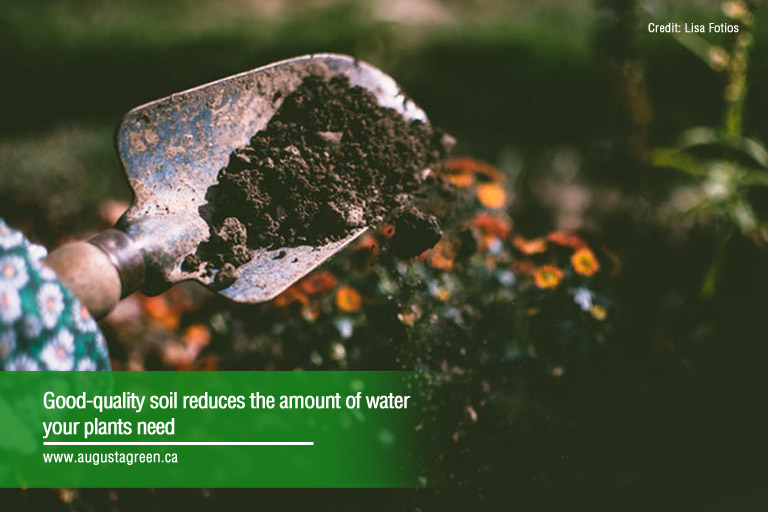
1. Take Care Of Your Soil
Adding mulch around shrubs, trees, and flowerbeds prevents moisture from evaporating, lessening the need to water your plants. You may also add organic matter to the soil to help it improve its structure and ability to hold moisture.
2. Choose Plants That Need Less Water
Some plants are less demanding for both care and watering than others. If you are starting a garden, research plant species that require less water to cultivate and opt for those. Note, however, that there are also other factors to consider when choosing the plants for your gardenimprove y, such as the local climate, available space, and the time you have available to devote to your garden. Many gardening websites can suggest plants that are best suited for your zone, soil, and local conditions.
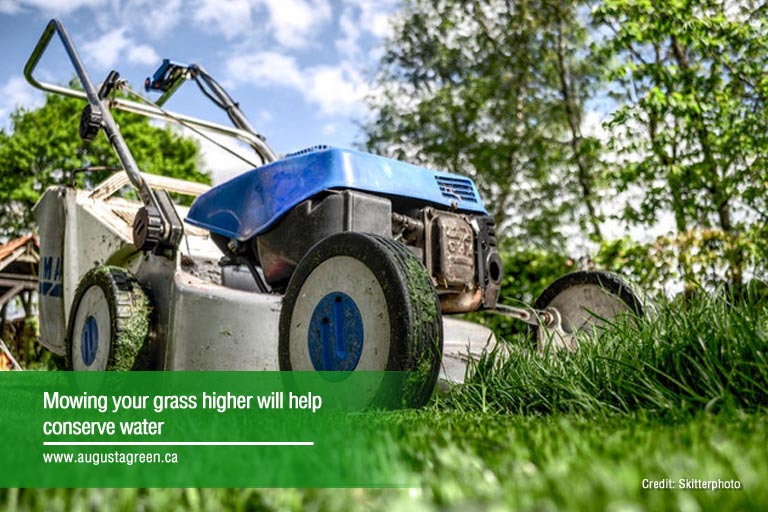
3. Mow Your Lawn Higher
During summers, mow the grass in your lawn high. This reduces the rate at which the grass grows. Furthermore, higher grass provides more shade for the soil, protecting the lawn from “sunburn” and slows down the evaporation of moisture in the ground.
4. Get Rid Of Weeds
Getting rid of the weeds that grow around your space not only makes your garden look better, your plants also have less competition for nutrients. Furthermore, weeds are known to steal moisture from your plants, causing them to need to be watered more often.
If you do not have time to get rid of weeds often, you may also cover the ground around your plants with water-permeable landscape fabrics. These block weeds from growing while still giving your plants access to water.
5. Limit Fertilizer Use
While using fertilizers is part of giving your plants the sustenance they need, accelerating plant growth can require more water and cause more weeds to grow.
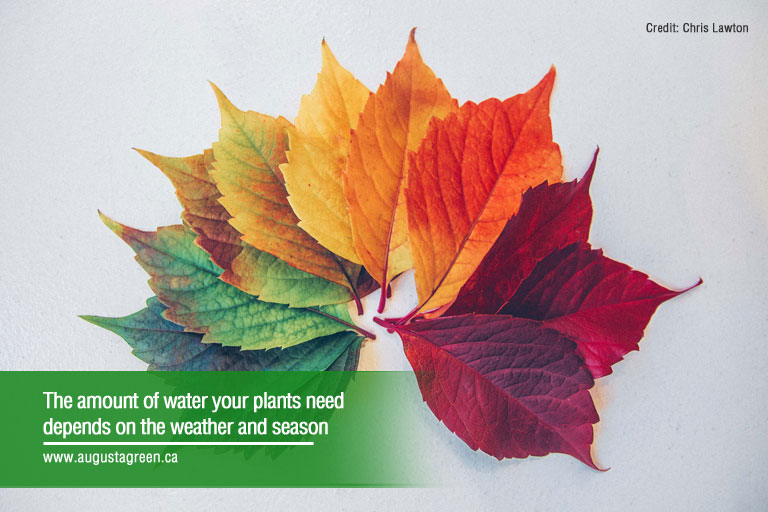
6. Adopt Efficient Watering Techniques
Your lawn and garden do not have the same water needs throughout the growing season; it varies, even throughout the day, depending on multiple factors. To water efficiently, consider these factors:
- Season – The quantity of water plants need depends on the season. Adjust your sprinkler system accordingly whenever the weather changes. Plants are to be watered most frequently during the summer, least often during fall and early winter, and somewhere in between during spring.
- Timing – Water your plants either at night or early in the morning, between 9:00 PM and 8:00 AM. Doing so at these times will reduce evaporation and encourage absorption, lessening water waste.
- Species of plants – Giving your plants more water than they need is not only a waste of resources; it can also adversely affect their health. Before planting, find out what you need to know about the species you want to grow, including how much water and sunlight they require.
7. Collect Rainwater And Reuse Old Water
Rainwater is great for your plants as it is free of salts and chemicals that are often present in groundwater and treated water sources. Installing a rain barrel to collect water dfor your plants will lessen your dependency on other water resources and reduce your water bill.
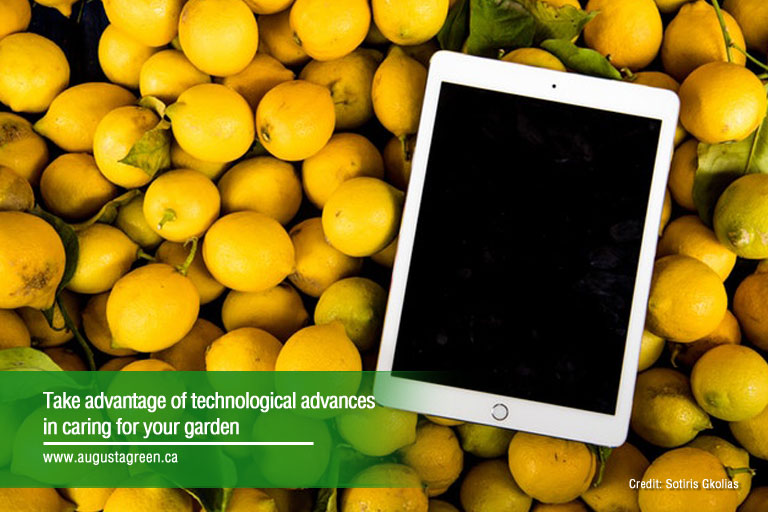
8. Use Technology in Gardening
There are several new technological innovations that aid gardeners in the care and maintenance of their gardens. These new technologies can not only help you save water, they also allow you to monitor and adapt your watering strategy to take the fullest advantage of the local weather conditions. Some of the most effective tools are:
- Moisture monitors – use apps or a caution light system to warn you when the soil around your plants is drying up.
- Smart sprinkler systems – will automatically run your sprinklers according to the needs of your plants. They take factors like weather, soil type and quality, landscape, and sun exposure into account. You can track the sprinkler activities through an app or virtual assistants.
- Rain sensors and rain gauges – can be installed on irrigation system controllers so that the system shuts off if a specified amount of rain has fallen. This system is inexpensive and protects your garden from being overwatered.
If you had an irrigation system set up years ago, contact an irrigation expert and ask them to inspect it to determine if it needs an upgrade. There have been significant improvements in the field, and new technologies offer more water-efficient emitters.
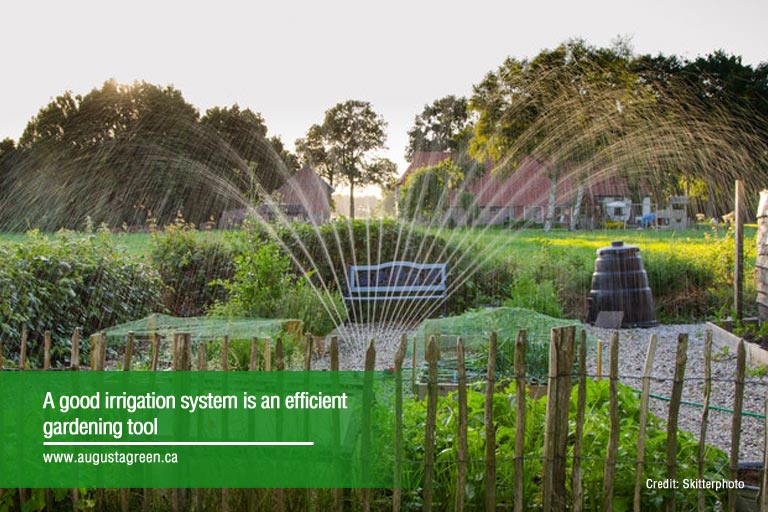
9. Install An Irrigation System
Having an irrigation plan helps you wisely use the water resources available to you. There are several irrigation systems to choose from, depending on the size of your garden, the kind of landscape you have, and the plants you are growing.
- Sprinkler irrigation – Sprinkler irrigation supplies water overhead, as if it were raining, through sprinklers. The advantages of installing an irrigation system are:
It is a cost-effective way of covering a large space
It is a flexible method of irrigation - Drip irrigation – Drip irrigation is the opposite of using sprinklers. The drip irrigation system sends water into the roots of the plants by gradually dripping water into them. This is an efficient method of irrigation as it directly feeds your plants without wetting the surface.
As the system directly feeds into the roots, it is more efficient in terms of water usage. Not only does this system use less water, it also loses much less to evaporation. - Surface irrigation – If sprinkler irrigation waters from above and drip irrigation waters from below, the surface irrigation system waters somewhere in between. Surface irrigation gently pours water onto the ground, letting it distribute by itself.
This irrigation method is the oldest method and doesn’t require much technology to install. However, it is highly dependent on the terrain and soil composition of your garden, as a slight natural slope is needed for the system to work.
To help you determine what irrigation system is best suited for your space, enlist the help of an irrigation expert. They will consider important factors like the kind of soil you have, the landscape and terrain of your garden, the species of plants you grow, and your budget before they advise you on the system you could use.
Practising water-efficient gardening techniques are great ways to help your plants grow healthy, assist in preserving the environment, and save you money. Although some may initially require a small financial outlay, it is often worth it in the long run.
If you need to consult a landscape irrigation and lighting company in Toronto, call Augusta Green Sprinklers at (416) 227-1666, or reach out to us through our contact page. We also offer our services throughout Oakville, Mississauga, Vaughn, Etobicoke, Markham, and Richmond Hill.

